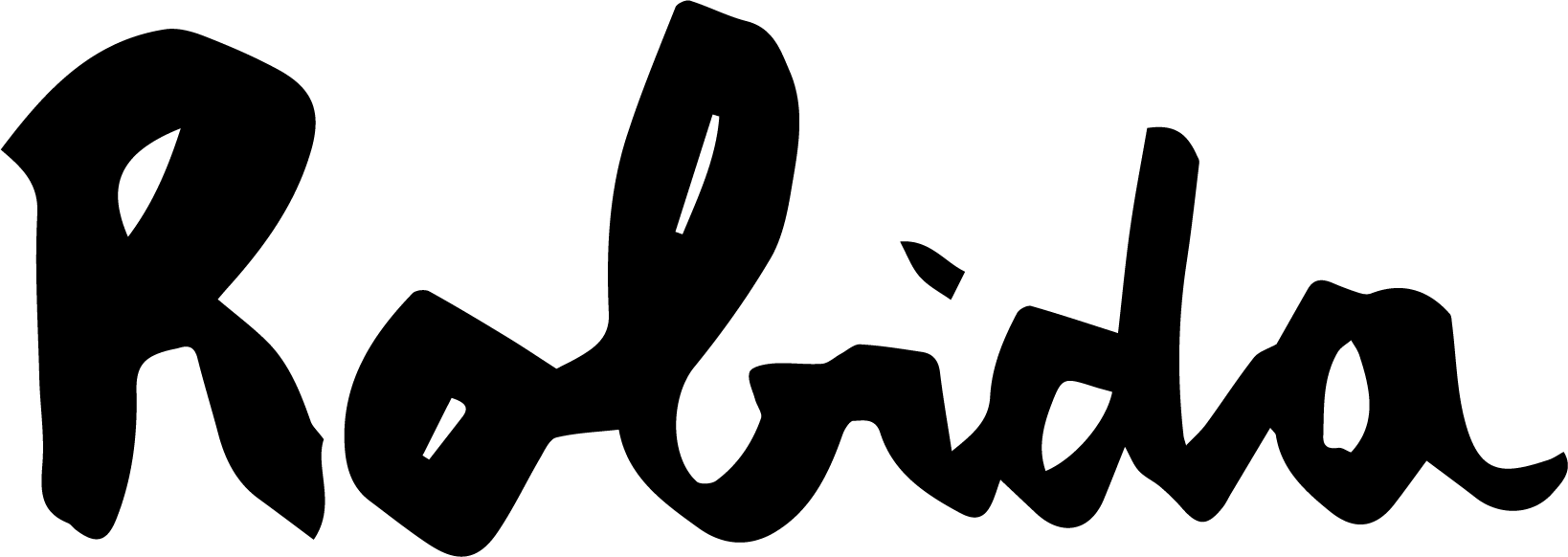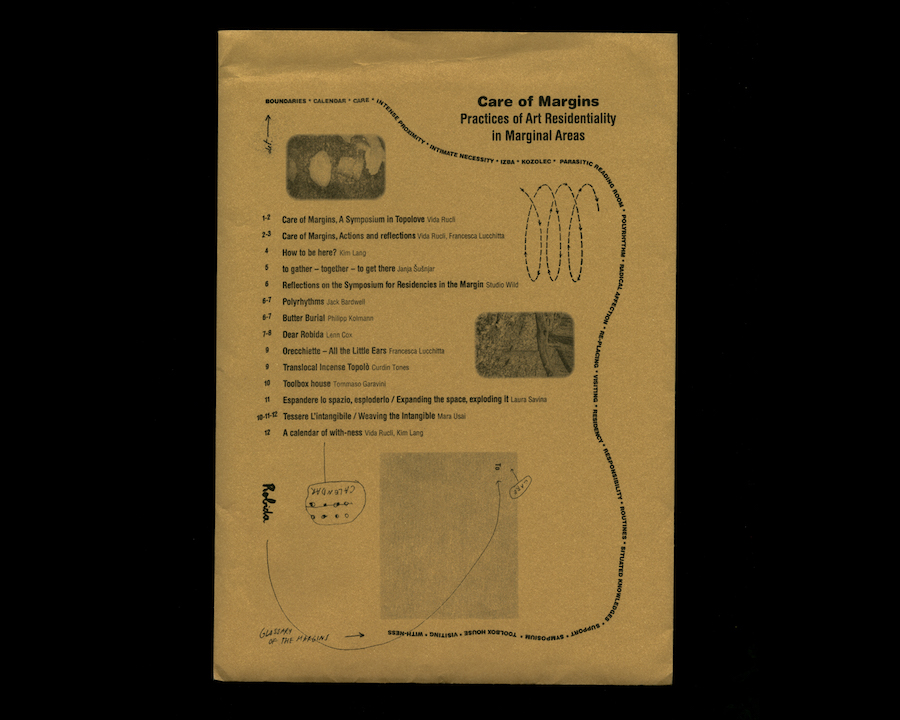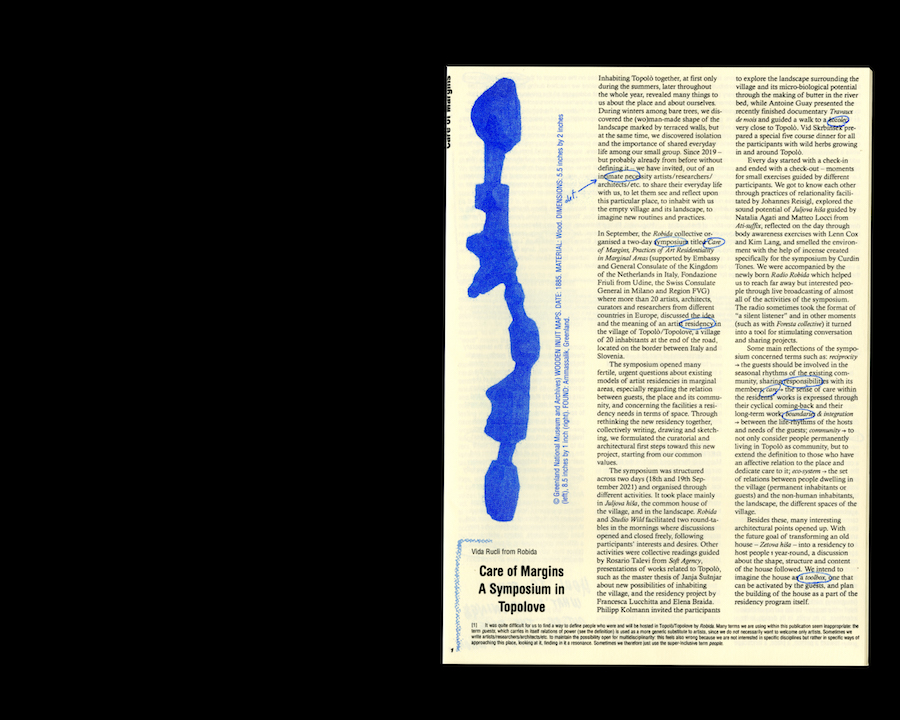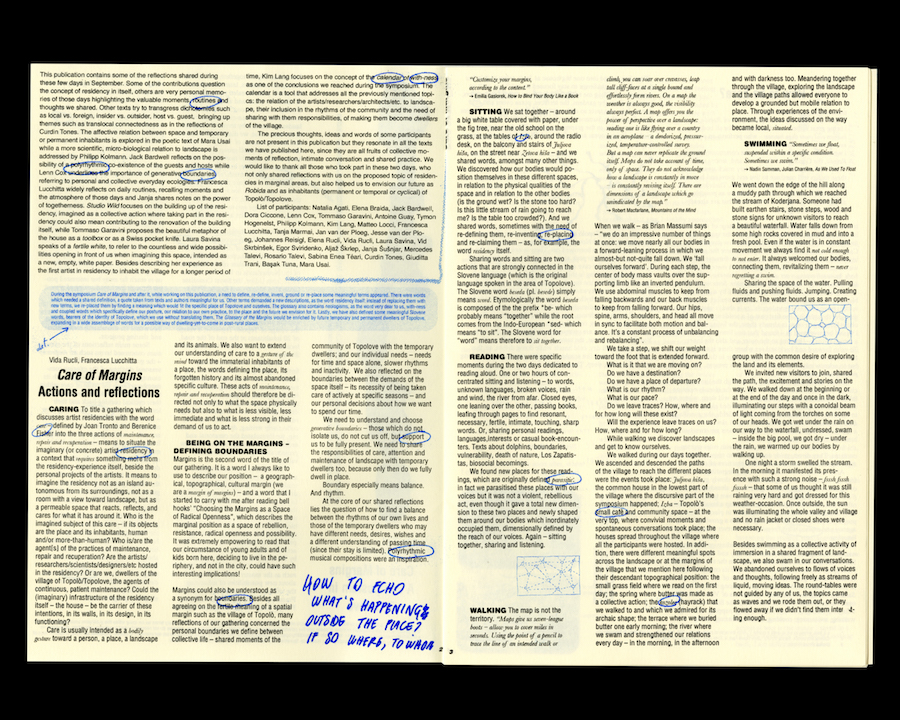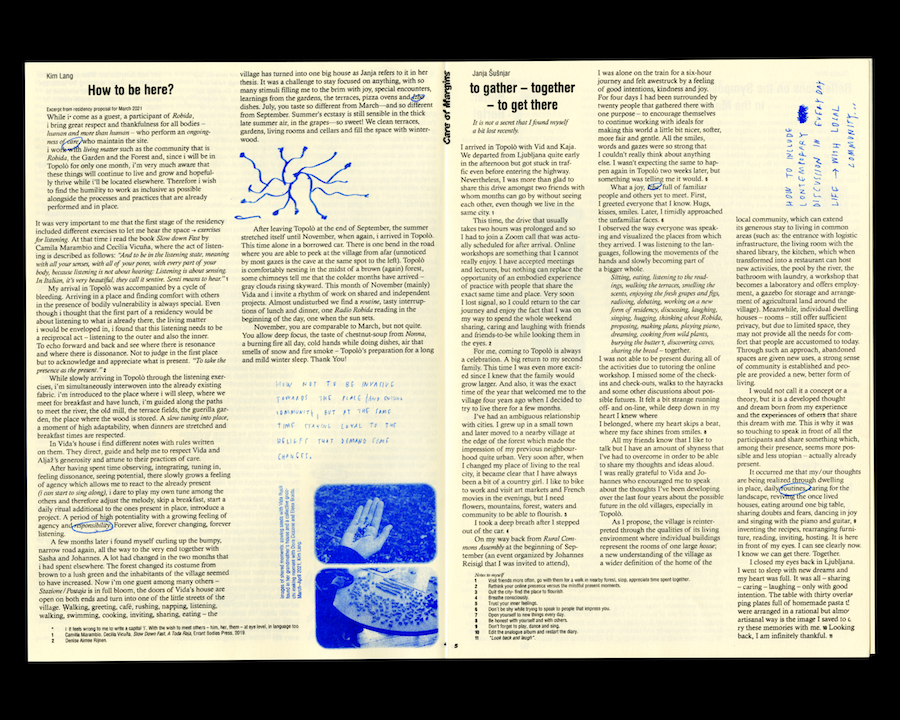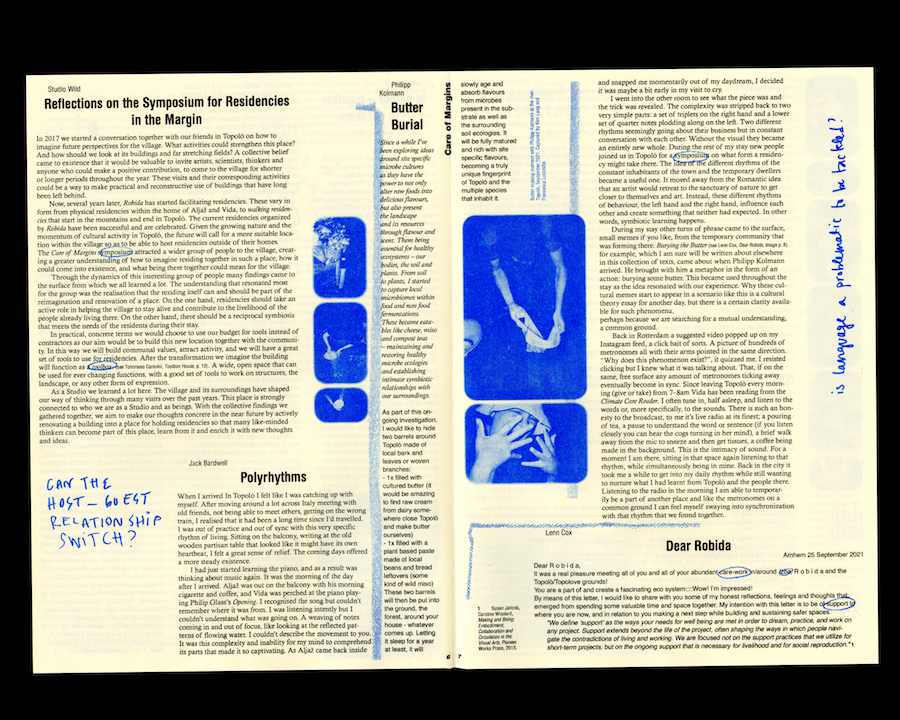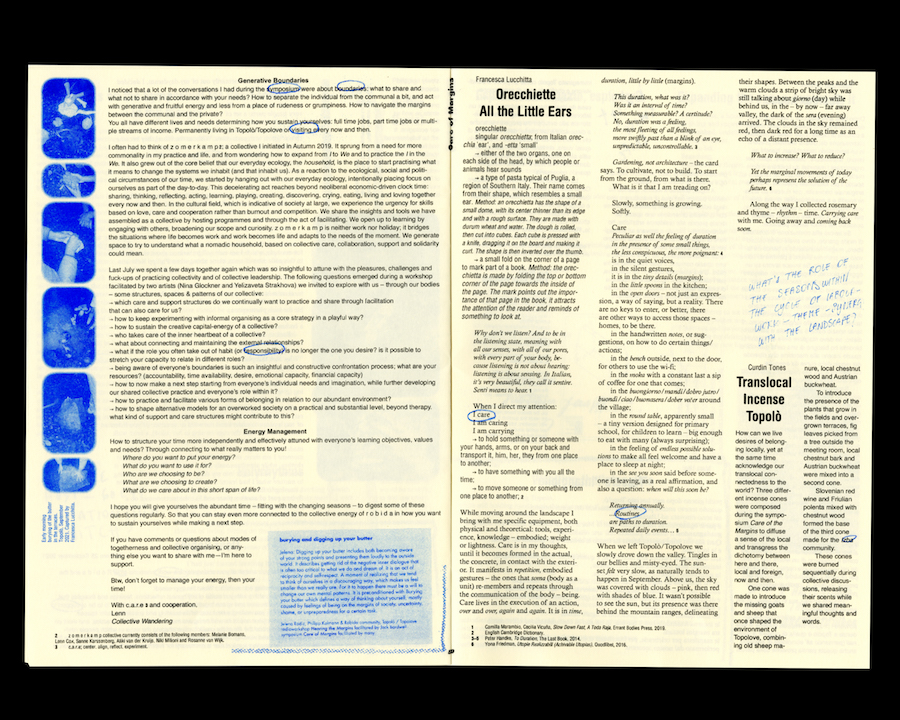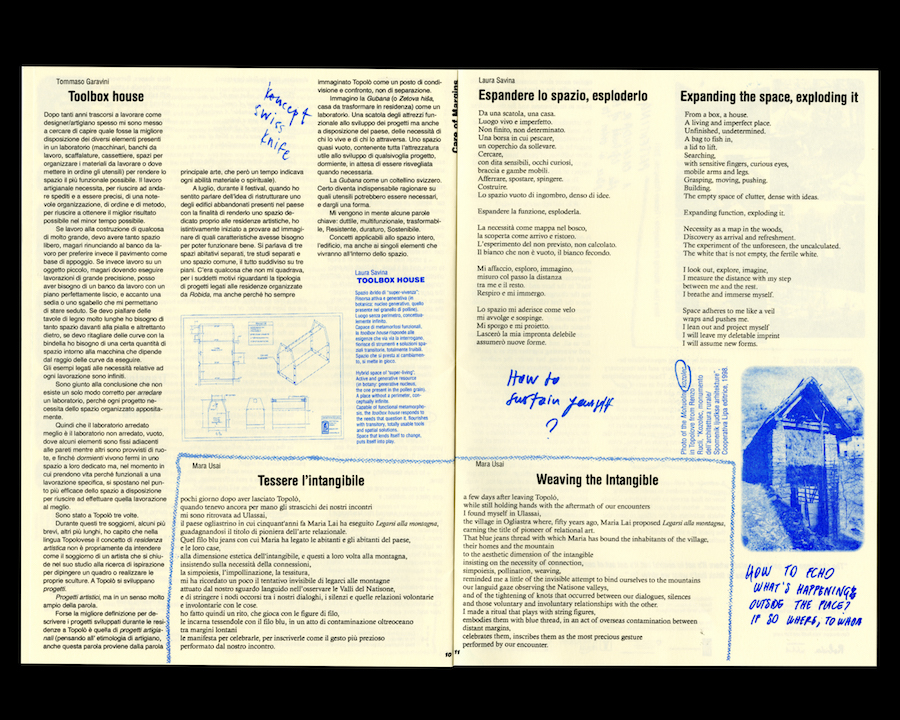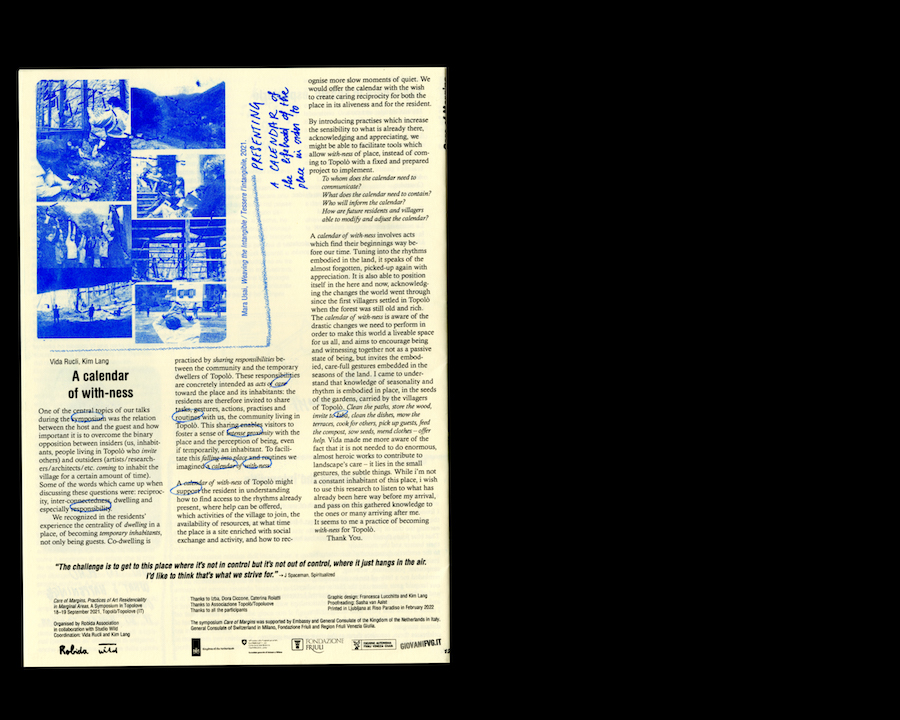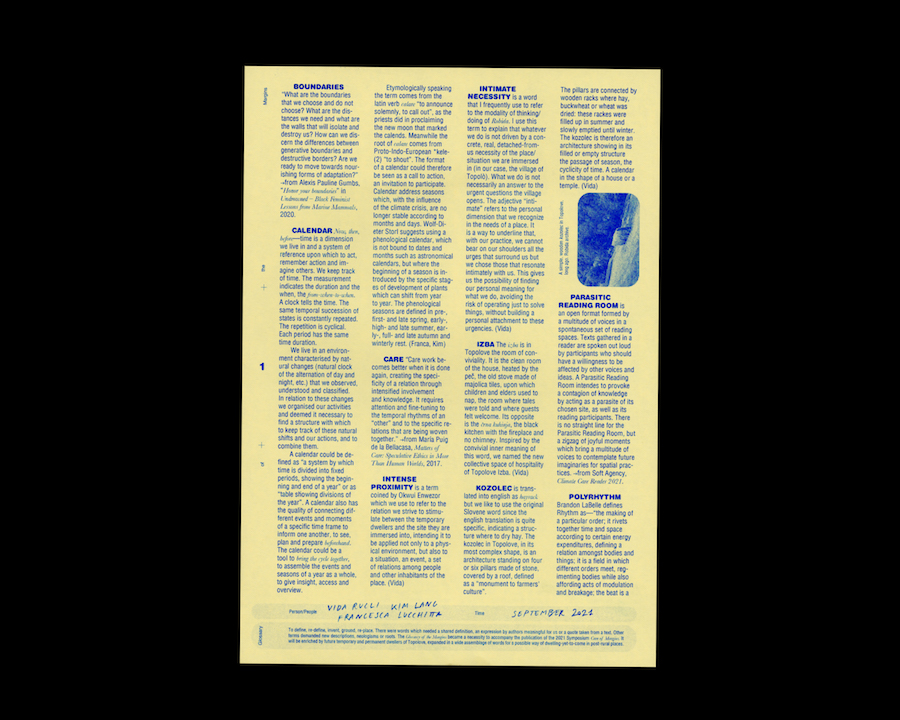Care of Margins
The publication Care of Margins, titled after the symposium organised by Robida, contains some of the reflections shared during few days in September 2021.
→ symposium Care of Margins
Some of the contributions question the concept of residency in itself, others are very personal memories of those days highlighting the valuable moments, routines and thoughts we shared. Other texts try to transgress dichotomies such as local vs. foreign, insider vs. outsider, host vs. guest, bringing up themes such as translocal connectedness as in the reflections of Curdin Tones. The affective relation between space and temporary or permanent inhabitants is explored in the poetic text of Mara Usai while a more scientific, micro-biological relation to landscape is addressed by Philipp Kolmann. Jack Bardwell reflects on the possibility of a polyrhythmic co-existence of the guests and hosts while Lenn Cox underlines the importance of generative boundaries, referring to personal and collective everyday ecologies. Francesca Lucchitta widely reflects on daily routines, recalling moments and the atmosphere of those days and Janja shares notes on the power of togetherness. Studio Wild focuses on the building up of the residency, imagined as a collective action where taking part in the residency could also mean contributing to the renovation of the building itself, while Tommaso Garavini proposes the beautiful metaphor of the house as a toolbox or as a Swiss pocket knife. Laura Savina speaks of a fertile white, to refer to the countless and wide possibilities opening in front of us when imagining this space, intended as a new, empty, white paper. Besides describing her experience as the first artist in residency to inhabit the village for a longer period of time, Kim Lang focuses on the concept of the calendar as one of the conclusions we reached during the symposium. The calendar is a tool that addresses all the previously mentioned topics: the relation of the artists/researchers/architects/etc. to landscape, their inclusion in the rhythms of the community and the need of sharing with them responsibilities, of making them become dwellers of the village.
✼
List of participants:
Natalia Agati, Elena Braida, Jack Bardwell, Dora Ciccone, Lenn Cox, Tommaso Garavini, Antoine Guay, Tymon Hogenelst, Philipp Kolmann, Kim Lang, Matteo Locci, Francesca Lucchitta, Tanja Marmai, Jan van der Ploeg, Jesse van der Ploeg, Johannes Reisigl, Elena Rucli, Vida Rucli, Laura Savina, Vid Skrbinšek, Egor Sviridenko, Aljaž Škrlep, Janja Šušnjar, Mercedes Talevi, Rosario Talevi, Sabina Enea Téari, Curdin Tones, Giuditta Trani, Başak Tuna, Mara Usai.
✼
Envelope publication
Printed in riso at Riso Paradiso (Ljubljana) in spring 2022 and re-printed in March 2024
Languages: English & Italian
